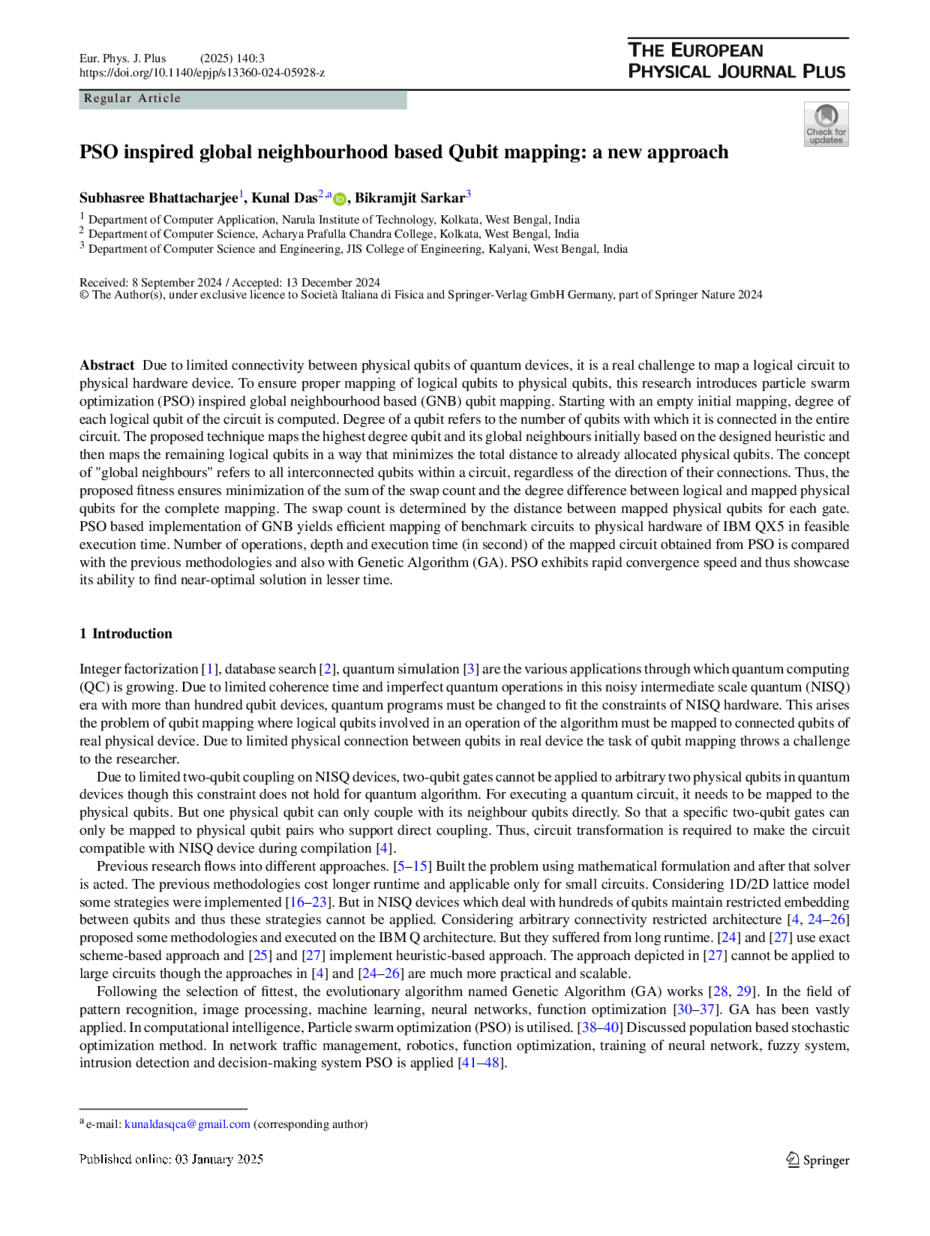https://doi.org/10.1140/epjp/s13360-024-05928-z
Regular Article
PSO inspired global neighbourhood based Qubit mapping: a new approach
1
Department of Computer Application, Narula Institute of Technology, Kolkata, West Bengal, India
2
Department of Computer Science, Acharya Prafulla Chandra College, Kolkata, West Bengal, India
3
Department of Computer Science and Engineering, JIS College of Engineering, Kalyani, West Bengal, India
Received:
8
September
2024
Accepted:
13
December
2024
Published online:
3
January
2025
Due to limited connectivity between physical qubits of quantum devices, it is a real challenge to map a logical circuit to physical hardware device. To ensure proper mapping of logical qubits to physical qubits, this research introduces particle swarm optimization (PSO) inspired global neighbourhood based (GNB) qubit mapping. Starting with an empty initial mapping, degree of each logical qubit of the circuit is computed. Degree of a qubit refers to the number of qubits with which it is connected in the entire circuit. The proposed technique maps the highest degree qubit and its global neighbours initially based on the designed heuristic and then maps the remaining logical qubits in a way that minimizes the total distance to already allocated physical qubits. The concept of "global neighbours" refers to all interconnected qubits within a circuit, regardless of the direction of their connections. Thus, the proposed fitness ensures minimization of the sum of the swap count and the degree difference between logical and mapped physical qubits for the complete mapping. The swap count is determined by the distance between mapped physical qubits for each gate. PSO based implementation of GNB yields efficient mapping of benchmark circuits to physical hardware of IBM QX5 in feasible execution time. Number of operations, depth and execution time (in second) of the mapped circuit obtained from PSO is compared with the previous methodologies and also with Genetic Algorithm (GA). PSO exhibits rapid convergence speed and thus showcase its ability to find near-optimal solution in lesser time.
Copyright comment Springer Nature or its licensor (e.g. a society or other partner) holds exclusive rights to this article under a publishing agreement with the author(s) or other rightsholder(s); author self-archiving of the accepted manuscript version of this article is solely governed by the terms of such publishing agreement and applicable law.
© The Author(s), under exclusive licence to Società Italiana di Fisica and Springer-Verlag GmbH Germany, part of Springer Nature 2024
Springer Nature or its licensor (e.g. a society or other partner) holds exclusive rights to this article under a publishing agreement with the author(s) or other rightsholder(s); author self-archiving of the accepted manuscript version of this article is solely governed by the terms of such publishing agreement and applicable law.





